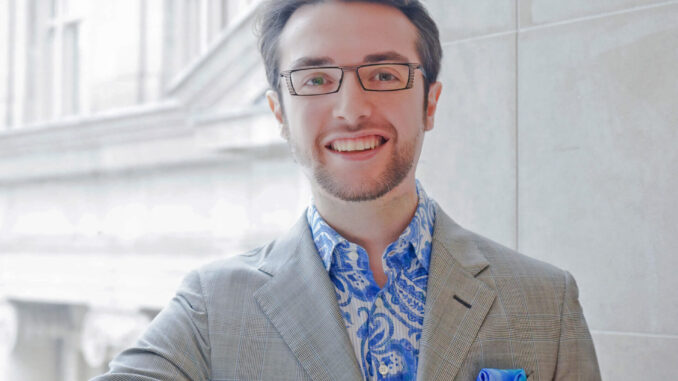
SPEAKER:
Gabriele Aroni
Abstract:
This talk will investigate how architecture influences and constructs narration in digital games –
architecture meaning here the virtual buildings, cities, and interiors present within video
games. What are the architectural elements and techniques that create a setting and enhance
narration and immersion for players? How do players understand architectural signs?
Virtual architecture is a central signifier in digital games, and its design heavily influences the
gameplay as well as the narrative. In 3D games players interact with virtual environments that
closely resemble our real architecture, and as such many of the tools we use to analyse real
architecture can be successfully applied to virtual architecture as well. However, unlike real
architecture, in digital games every brick, building, and block is placed for a specific reason,
either related to the gameplay or the narrative. As such, semiotics is most appropriate to
investigate how these signs communicate to players.
Through a series of examples this talk will illustrate how the theory of Umberto Eco of
denotation and connotation in architecture and the concept of “anticipatory play” devised by
Brian Upton can be used to understand how architectural signs in games communicate to
players and how they are used to enhance gameplay, narration, and immersion.
Bio:
Dr Gabriele Aroni is Assistant Professor at the School of Cultural Technology of Xi’an Jiaotong-
Liverpool University. He held teaching posts at the Toronto Metropolitan and OCAD universities
in Canada and worked as a designer at the Studio Roosegaarde in the Netherlands, as well as in
Canada, England, and Italy. His research is situated at the intersection of architecture, game
studies, cultural heritage, and semiotics. He published articles in Well Played, the Journal of
Media Research, Annali di Architettura, Southern Semiotics Review, a book on Renaissance
architecture (Mimesis 2016), and his forthcoming book The Semiotics of Architecture in Video
Games is slated for publication in September 2022 by Bloomsbury Academic. He presented at
conferences in China, Canada, Romania, Portugal, and Italy. Dr Aroni is also a researcher at the
Global Academic Alliance on a Community with Shared Future (Communication University of
China, Beijing), the Multilanguage Cultural Heritage Lexis (University of Florence, Italy), and the
ICOMOS International Scientific Committee on Cultural Heritage Sites.
Jun 5, 2022
11:00 PM in Sydney
03:00 PM in Berlin
10:00 AM in Rio de Janeiro
09:00 AM in Toronto
PANEL:
Roman Esqueda Atayde (Mexico City)
Ken Foote (Storrs, Connecticut)
Remo Gramigna (Torino)
Jean-Guy Meunier (Montreal)
Thiago Muller
Susan Petrilli (Bari)
Piotr Sadowski (Dublin)
Euripides Zantides (Cyprus)
Elizabetta Ostuni (Bari)
MODERATOR:
Monica Rector (Rio de Janeiro)
I was born in São Paulo, Brazil. My graduate studies were done in Madrid, Spain, but I defended the dissertation at the University of São Paulo (USP) in Neo-Latin Studies (Spanish as major) where I worked for a couple of years, before moving to Rio de Janeiro. I got a second Ph.D. in Linguistics at the Universidade Federal of Rio de Janeiro (UFRJ). I taught at UFRJ, at the Universidade Federal Fluminense (UFF) and the Pontifícia Universidade Católica (PUC) before coming to the States.
My career and interest have always been in Humanities, and I have taught in a number of different areas: language and linguistics, literature and communication, and semiotics. At USP I taught Spanish language and Hispanic culture: at UFRJ and PUC my main field was Linguistics, with a specialization in Semantics and Dialectology; at UFF I taught Communication Theory with emphasis on nonverbal communication and mass communication (especially the TV language). I came to the United States in 1987 as a visiting professor and permanently in 1989 to teach at the University of North Carolina at Chapel Hill. I am currently working with Portuguese and Brazilian Literature and Culture with a focus on Women writers and cinema. Currently I am editing a Dictionary of Lusophone-African Writers.
My bibliography includes the following books:
O fraco da baronesa by Guiomar Torresão (2005), Dictionary of Literary Biography. Brazilian Writers 307 (co-editor Fred Clark) (2005), Dictionary of Literary Biography. Portuguese Writers 287 (co-editor Fred Clark) (2004), Gestures: Meaning and Use (co-editor) (2003), Gestos: uso e significado (co-editor Isabella Poggi) (2003), Comunicação e modernidade: um estudo discursivo (co-editors Joaquim Nepomuceno, Eduardo Neiva) (2000), Mulher, sujeito e objecto da literatura portuguesa (1999), Comunicação na era pós-moderna (co-editor Eduardo Neiva) (1998), A fala dos jovens (1994), Comunicação do corpo(1990, 4th ed. 2003), Comunicação não-verbal, a gestualidade brasileira (1985), Manual de semântica (1980), Para ler Greimas (1978), A linguagem da juventude (1975), “The Code and Message of Carnival: Escolas-de-Samba.” Carnival (New York, 1984; Tokyo, 1987; Mexico, 1989).

Be the first to comment